

The Inca Trail is one of Peru's most emblematic hiking trail in Peru, leading to the ancient city of Machu Picchu. Along the way, hikers visit various archaeological sites that reveal key aspects of the history and culture of the Inca Empire.
These stone constructions, many of them in excellent condition, allow appreciation of the engineering, planning, and symbolism present in the Inca civilization.
Among the highlights are Wiñay Wayna, with its terraces and temples integrated into the hillside; Phuyupatamarca, known as "the city above the clouds"; and Runkurakay, an ancient semicircular checkpoint. Each of these places offers unique details that enrich the experience of the journey.
When hiking the Inca Trail, hikers should be prepared for a strenuous trek that can take up to four days to complete. Hikers should also be prepared for changes in weather and altitude, as the trail reaches elevations of over 4,000 meters.
In addition to the ruins, hikers can also expect to encounter breathtaking views of the Andes Mountains and the lush, green valleys below. Overall, the Inca Trail offers a unique opportunity to experience the history and natural beauty of Peru firsthand.
Scenic beauty: The Inca Trail is a beautiful hike that takes you through Andean mountain ranges, cloud forests, and past rivers and waterfalls. The scenery is breathtaking and varies from one day to the next.
Altitude: The Inca Trail reaches elevations of over 4,000 meters, which can be challenging for some hikers. Altitude sickness is a common concern, so it's important to take the necessary precautions and acclimate properly before starting the hike.
Physical challenge: The Inca Trail is a challenging hike that requires a good level of physical fitness. The trail can be steep, rocky, and uneven, and you'll need to carry your own gear and supplies.
Weather: The weather on the Inca Trail can be unpredictable, with rain, fog, and sun all possible on the same day. It's important to bring appropriate gear for all weather conditions, including rain gear, warm layers, and sun protection.
Accommodation: During the hike, you'll be camping in tents at designated campsites along the trail. These campsites have basic facilities, including toilets and cooking areas.
Inca ruins: The Inca Trail is famous for its ancient ruins, which you'll encounter along the way. These ruins are well-preserved and provide a glimpse into the fascinating history of the Inca Empire.
Cultural experience: The Inca Trail is a cultural experience as well as a physical challenge. You'll have the opportunity to learn about the history and traditions of the Inca people, as well as the local flora and fauna.
Llactapata is one of the Inca historical sites located along the Inca Trail, about 7 kilometers from the beginning of the route. These Inca ruins are situated on a ridge with panoramic views of the Aobamba valley, from where beautiful Andean landscapes can be appreciated.
It is believed that Llactapata functioned as a resting and control point for those heading towards Machu Picchu Peru. In addition, it had an important agricultural role, as shown by the cultivation terraces and organized spaces for food storage. Among its most prominent structures is a large ceremonial platform, possibly used for rituals related to the agricultural or religious calendar.
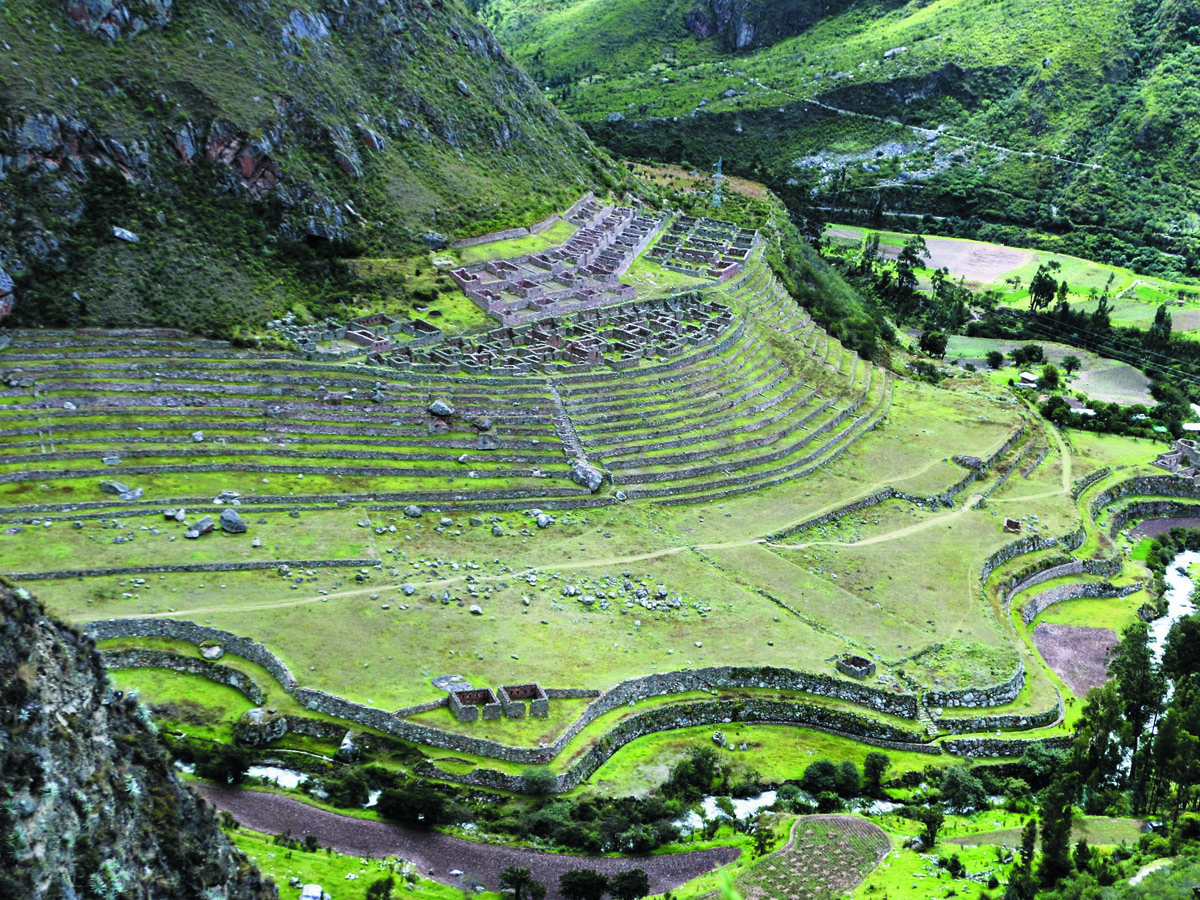
A notable feature of these Inca ruins is the use of two types of stone: local rock and granite transported from a quarry located more than 30 kilometers away. This choice reveals the high technical level achieved by the builders of the Inca Empire.
On the other hand, this place was rediscovered at the beginning of the 20th century by Hiram Bingham, the same explorer who introduced the famous Inca citadel of Machu Picchu to the world. Llactapata is today an appreciated stop for those who travel the Classic Inca Trail. It is part of the set of Inca Trail ruins that allow exploring the Inca past through its buildings, roads, and landscapes.
Runkurakay is one of the Inca ruins found along the Inca Trail to Machu Picchu, approximately 13 kilometers from the start of the trail. This site is believed to have served as a resting point for messengers and travelers of the Inca Empire during their transit to the Inca Citadel.
The main construction is circular in shape and stands on an elevated platform. Its design suggests that it may have served as a watchtower, storage, or ceremonial space. It also stands out for architectural elements characteristic of Inca historical sites, such as the trapezoidal door and zigzag walls, which reflect the style and precision of Inca architecture.
In addition to the central structure, Runkurakay includes terraces and small enclosures possibly used for agricultural or logistical purposes. The site's location, at 3850 meters above sea level, makes it one of the highest Inca ruins on the 4 day Inca Trail, and shows how the Incas managed to establish complex structures even in extreme geographical conditions.
Runkurakay is part of the set of Inca ruins of Machu Picchu and the main Inca sites that enrich this historic Andean route. Its archaeological value makes it a prominent stop within the tour of the Inca Trail Ruins.
Sayacmarca is an Inca ruin located along the Inca Trail, approximately 19 kilometers from the start of the trail. The site is situated on a high ridge overlooking the surrounding mountains and valleys, and is one of the best-preserved Inca ruins along the Inca Trail.
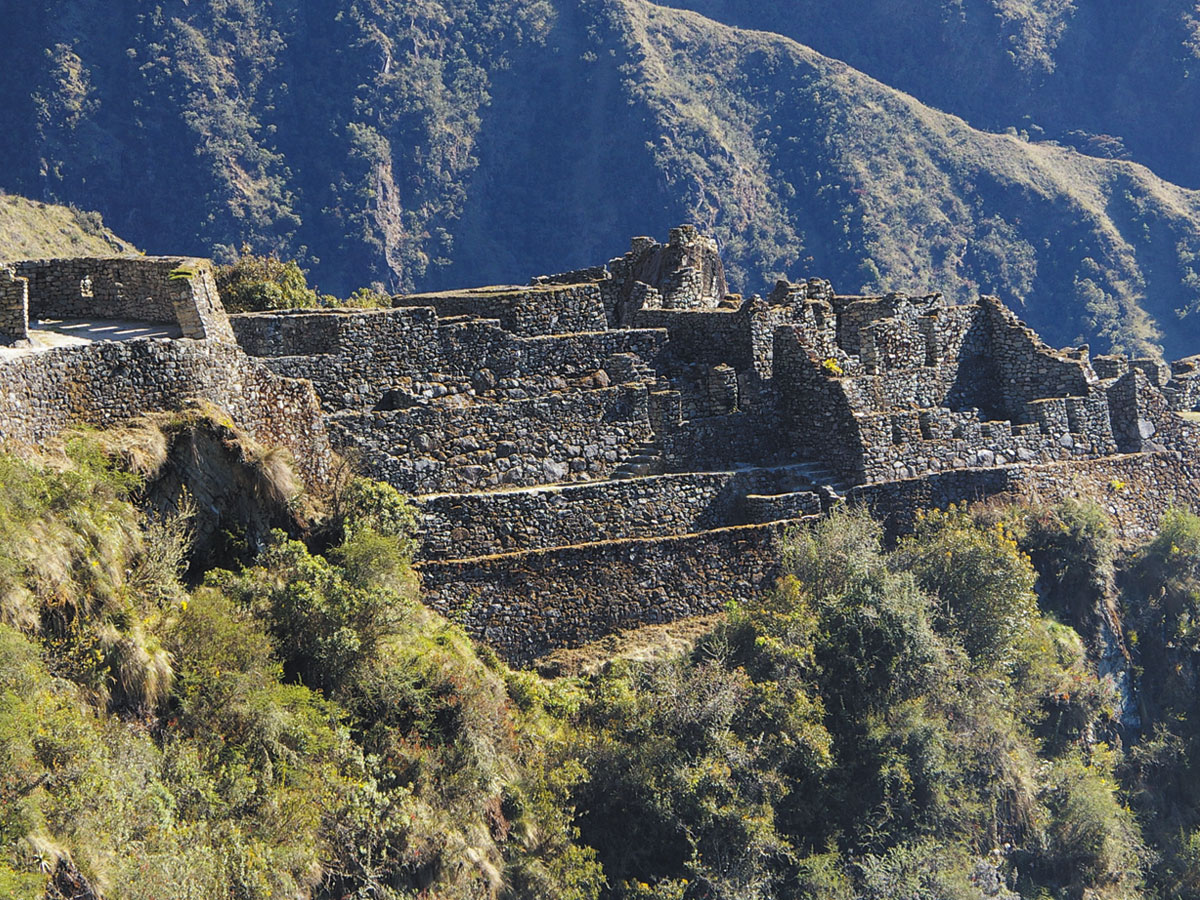
The name Sayacmarca means "Inaccessible Town" in Quechua, and the site is believed to have been a fortress or defensive structure built by the Inca Empire. The site includes a number of impressive architectural features, such as narrow passageways, steep staircases, and a series of terraces and platforms.
One of the unique features of Sayacmarca is its location, which is difficult to access and offers strategic advantages for defense. The site is also situated at an elevation of 3,700 meters, making it one of the highest Inca ruins on the Inca Trail.
In addition to its defensive features, Sayacmarca also includes a number of ceremonial and religious structures, including a sacred fountain and a number of smaller buildings that may have been used for religious ceremonies or as living quarters for Inca priests.
Phuyupatamarca is an Inca ruin located along the Inca Trail, approximately 23 kilometers from the start of the trail. The name Phuyupatamarca means "Town Above the Clouds" in Quechua, and the site is situated at an elevation of 3,650 meters, offering stunning views of the surrounding mountains and valleys.
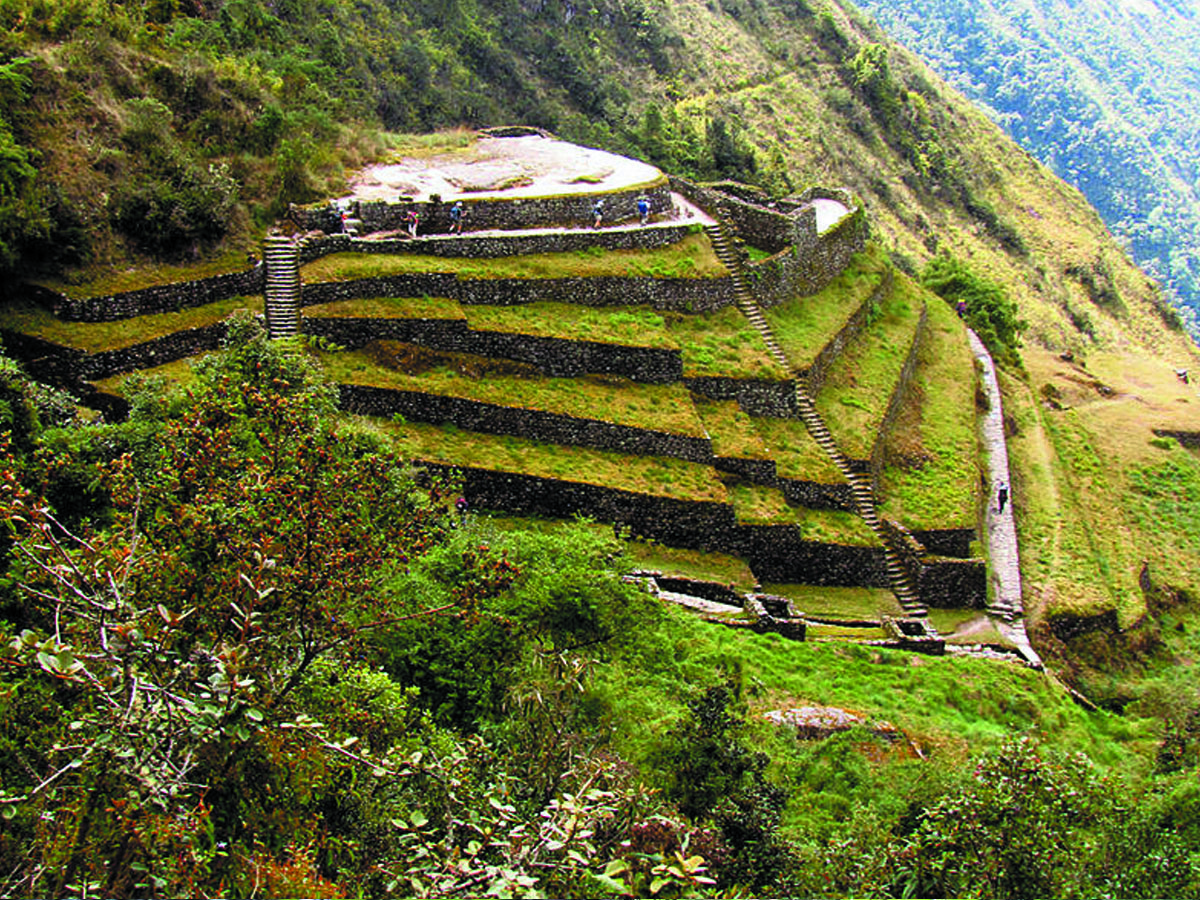
The site is believed to have been a religious and ceremonial center, and it includes a number of impressive architectural features, such as a series of terraces and platforms, a large plaza, and a complex system of water channels and fountains.
One of the unique features of Phuyupatamarca is its intricate system of water channels, which allowed for the efficient distribution of water throughout the site. The site also includes a number of smaller buildings and structures that may have been used for religious ceremonies or as living quarters for Inca priests.
In addition to its impressive architectural features, Phuyupatamarca is also notable for its strategic location along the Inca Trail. The site is situated at a narrow pass in the mountains, offering a strategic advantage for defense and control of the surrounding area.
Wiñay Wayna is an Inca ruin located along the Inca Trail, approximately 26 kilometers from the start of the trail. The name Wiñay Wayna means "Forever Young" in Quechua, and the site is believed to have been a religious and ceremonial center.
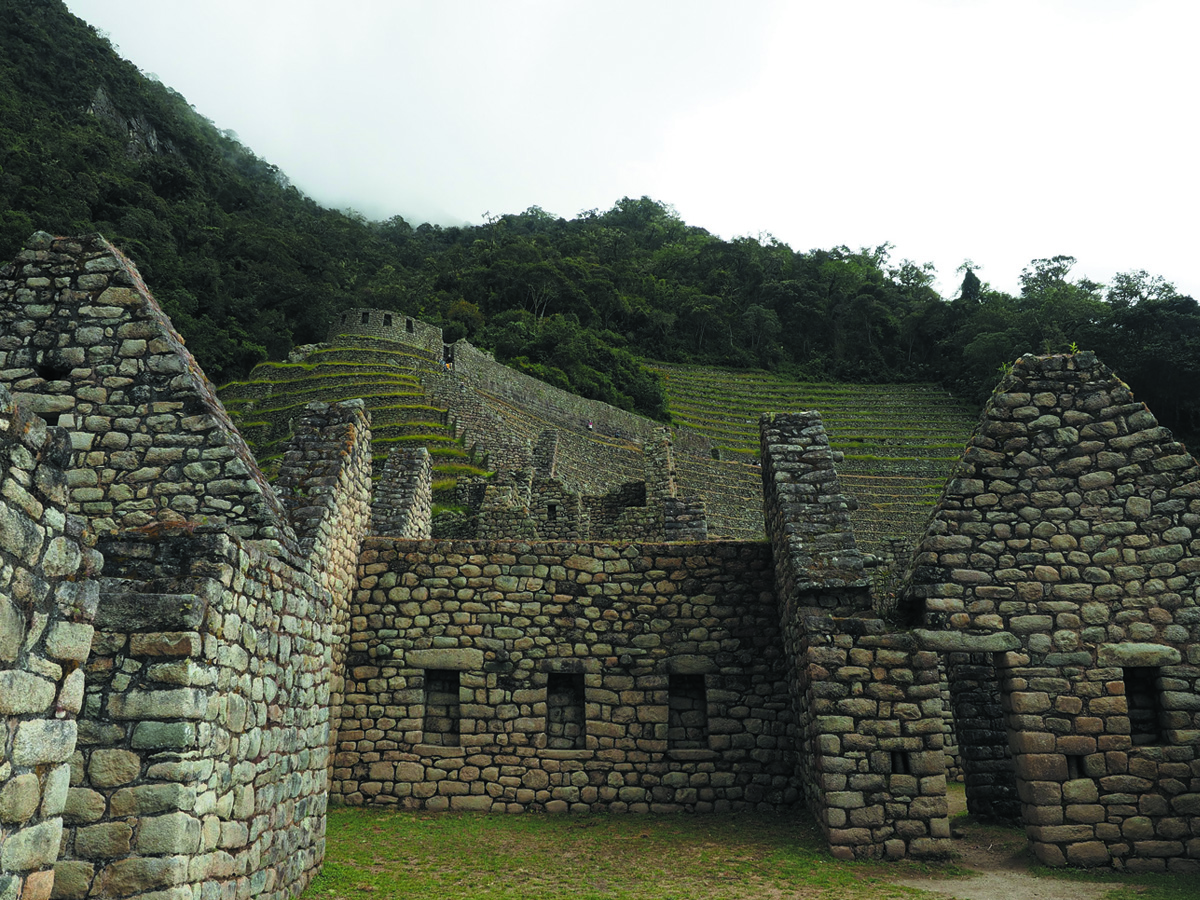
The site includes a number of impressive architectural features, including a series of terraces and platforms, a large plaza, and a complex system of water channels and fountains. The site also includes a number of smaller buildings and structures that may have been used for religious ceremonies or as living quarters for Inca priests.
One of the unique features of Wiñay Wayna is its location, which is situated on a steep hillside overlooking the surrounding mountains and valleys. The site is also surrounded by lush forests and vegetation, adding to its natural beauty and appeal.
In addition to its impressive architectural features, Winay Wayna is also notable for its strategic location along the Inca Trail. The site is situated at a narrow pass in the mountains, offering a strategic advantage for defense and control of the surrounding area.
Today, Winay Wayna Peru is a popular stop for hikers on the Inca Trail, offering a glimpse into the history and culture of the Inca people, as well as stunning views of the surrounding mountains and valleys. The site is also known for its proximity to Machu Picchu, with many hikers using it as a base camp before making the final trek to the famous Inca citadel.
Intipata is one of the most prominent Inca historical sites along the Inca Trail, located approximately 17 kilometers from the starting point of this ancestral route. Its name in Quechua, meaning "Terrace of the Sun", reflects its agricultural function and its close relationship with the natural environment.
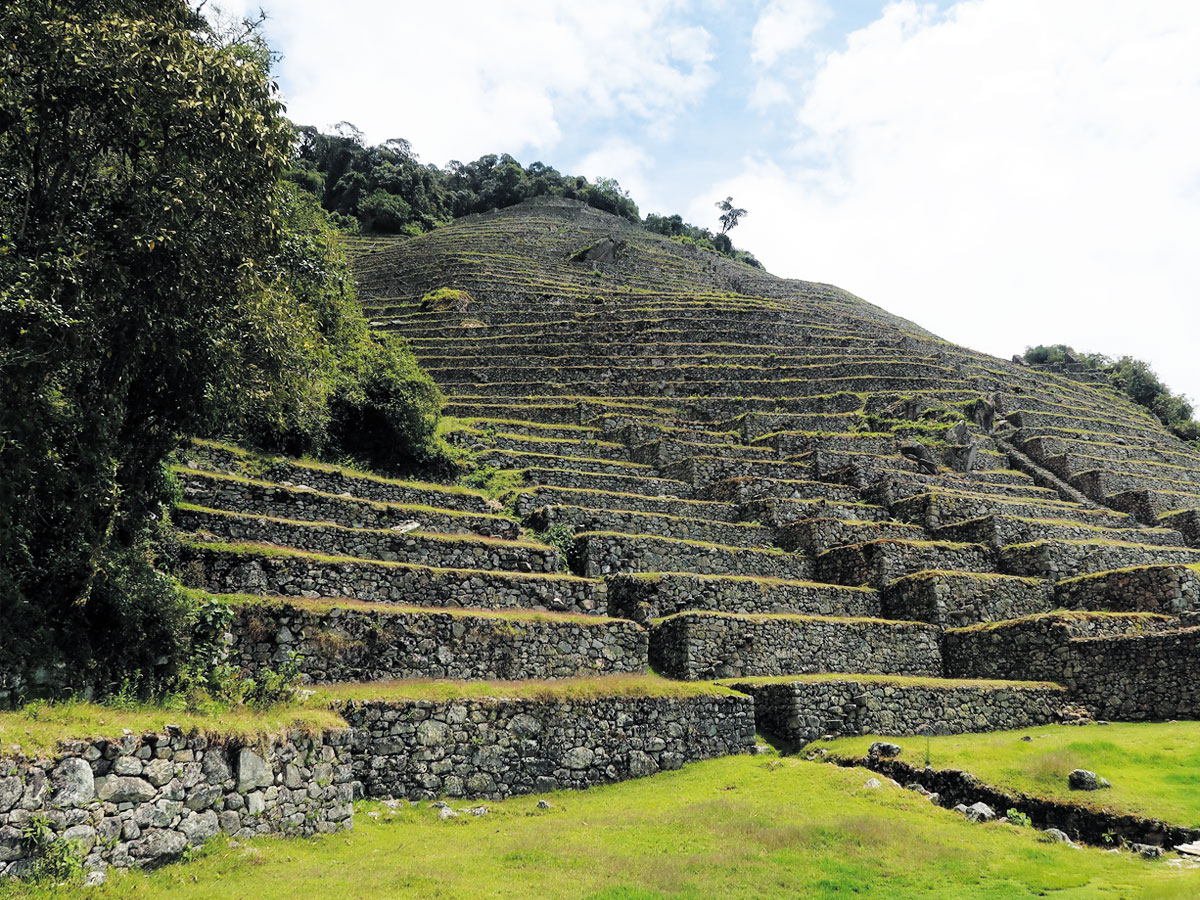
These Inca ruins feature a series of stepped terraces that demonstrate the mastery of Inca agricultural engineering. The site has a large central plaza, a system of canals and fountains that precisely directed water, and structures adapted for high-altitude cultivation. The terraces were designed with a remarkable use of the terrain, sunlight, and Andean rainfall, which allowed for efficient agriculture in the midst of a mountainous environment.
Intipata's location, surrounded by vegetation and with open views towards the Andean valleys and peaks, makes it one of the most photogenic spots on this ancient route. In addition to its agricultural value, the site had strategic importance, as it is located in a narrow pass that facilitated control and surveillance of the area.
For those who travel the Inca Trail Ruins, Intipata represents a fundamental stop. It is a tangible example of the advanced agricultural techniques and territorial organization of the Incas. Exploring these Inca ruins offers a direct look at the ingenuity and adaptation of a civilization that left a deep mark on the Andean landscape.
The Sun Gate, also known as Inti Punku in Quechua, is an iconic Inca ruin located along the Inca Trail, approximately 2.5 kilometers from the famous Inca citadel of Machu Picchu. The site is believed to have been a checkpoint and entrance to Machu Picchu, with guards stationed here to control access to the citadel.
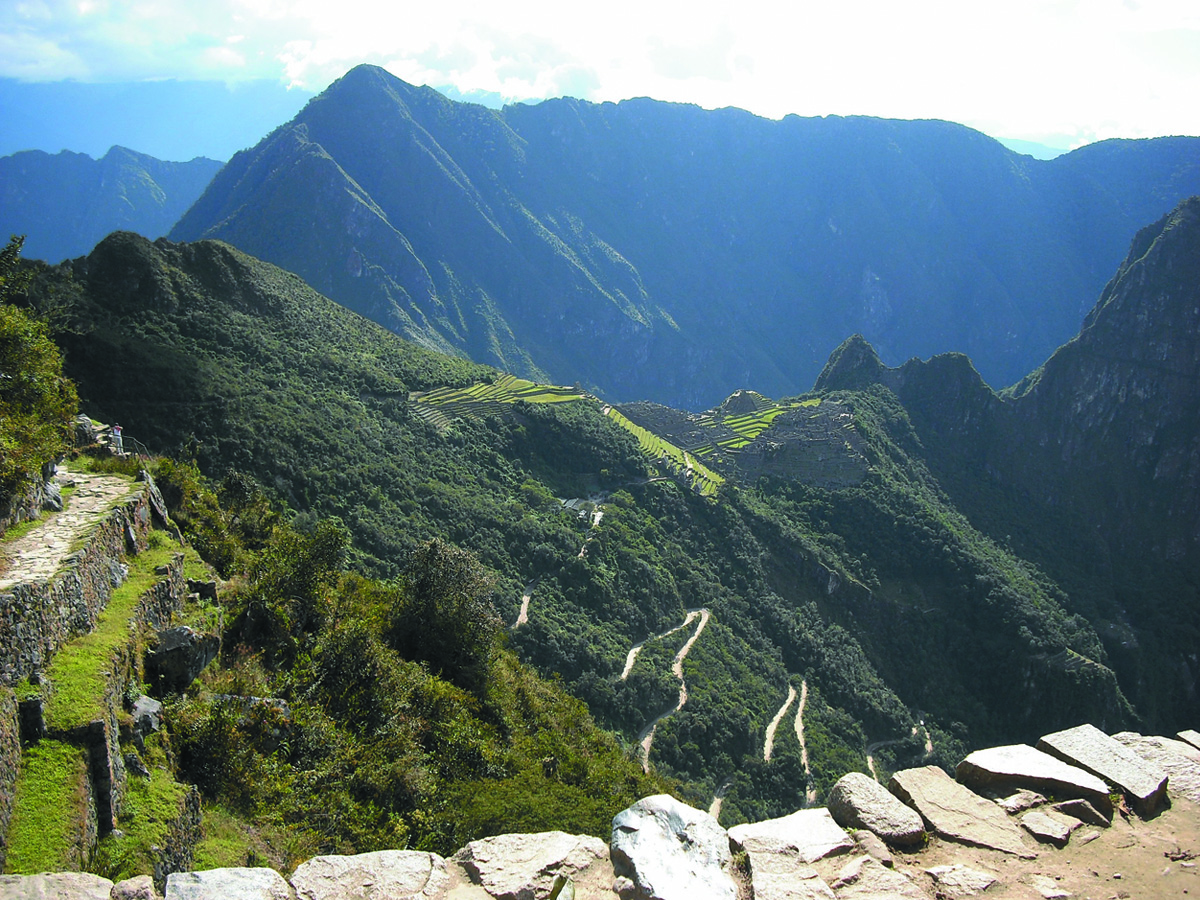
The Sun Gate consists of a stone structure that is situated on a ridge overlooking the Machu Picchu complex. The site is named after the Inca sun god, Inti, and it is believed to have been a place of religious significance for the Inca people. The site is also known for its stunning views of the surrounding mountains and valleys, and it is a popular spot for photographers and hikers on the Inca Trail.
Today, visitors to Machu Picchu can hike to the Sun Gate as part of the Inca Trail trek, or take a separate trail from the Machu Picchu complex. The hike to the Sun Gate Machu Picchu is relatively easy, taking approximately 45-60 minutes, and it offers stunning views of the Inca Citadel from a different perspective. The Sun Gate is also a popular spot for watching the sunrise over Machu Picchu, offering a magical and unforgettable experience for visitors.
Overall, the Sun Gate is a must-see attraction for anyone visiting Machu Picchu or hiking the Inca Trail, providing a glimpse into the history and culture of the Inca people, as well as breathtaking views of one of the world's most iconic archaeological sites.
Machu Picchu is a 15th century Inca citadel located in the Andes Mountains of Peru, and it is one of the most iconic and visited archaeological sites in the world. The site was built during the reign of the Emperor Inca Pachacutec, and it was abandoned shortly after the Spanish conquest of Peru in the 16th century.
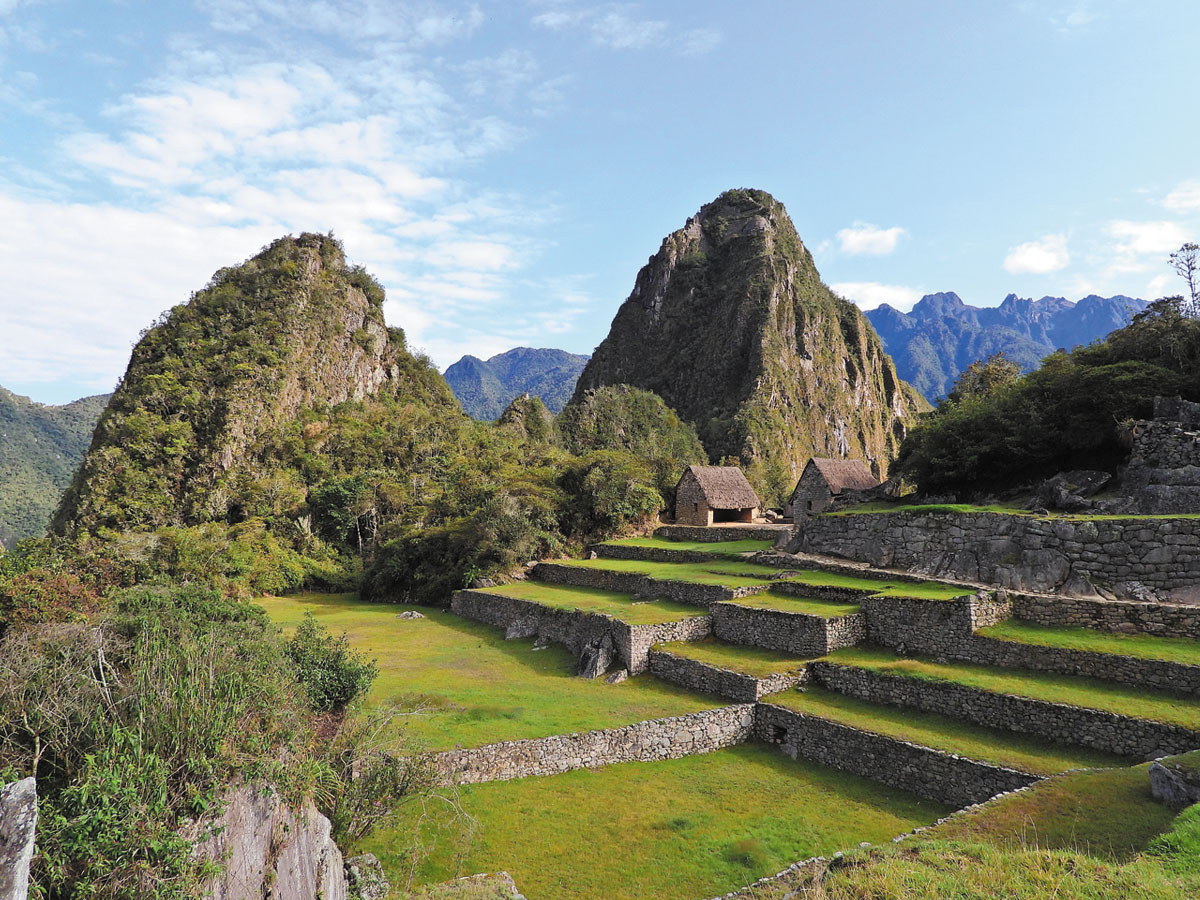
Machu Picchu is situated at an elevation of approximately 2,430 meters above sea level, and it is surrounded by steep cliffs and mountains. The site includes a number of impressive architectural features, including a series of terraces, plazas, and temples, as well as a complex system of water channels and fountains. The site is also known for its sophisticated engineering, including its use of natural drainage systems to prevent erosion and landslides.
One of the most remarkable features of Machu Picchu is its location and setting, which offers stunning views of the surrounding mountains and valleys. The site is also surrounded by lush forests and vegetation, adding to its natural beauty and appeal.
Today, Machu Picchu is a popular tourist destination, attracting millions of visitors each year from around the world. Visitors can explore the site on foot, taking guided tours or hiking the famous Classic Inca Trail, which leads from the city of Cusco to Machu Picchu. The site is also known for its spiritual and cultural significance, and many visitors come to experience the mystical energy and history of the Inca people.
In recognition of its importance and cultural significance, Machu Picchu was designated a UNESCO World Heritage Site in 1983, and it is widely considered one of the Seven Wonders of the World.
For adventure and nature lovers, reaching Machu Picchu on foot is an unforgettable experience. Beyond the famous train, there are trekking routes that offer spectacular landscapes and ancient archaeological remains, each with its own unique characteristics. Below, we highlight three of the most recommended:
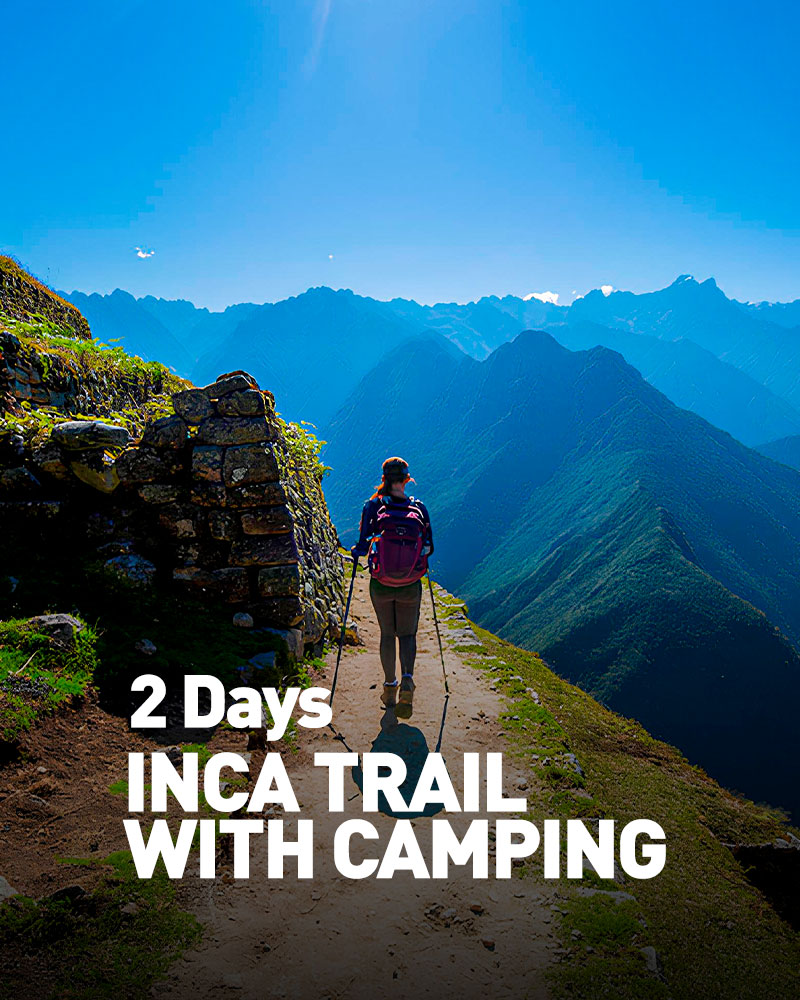 | 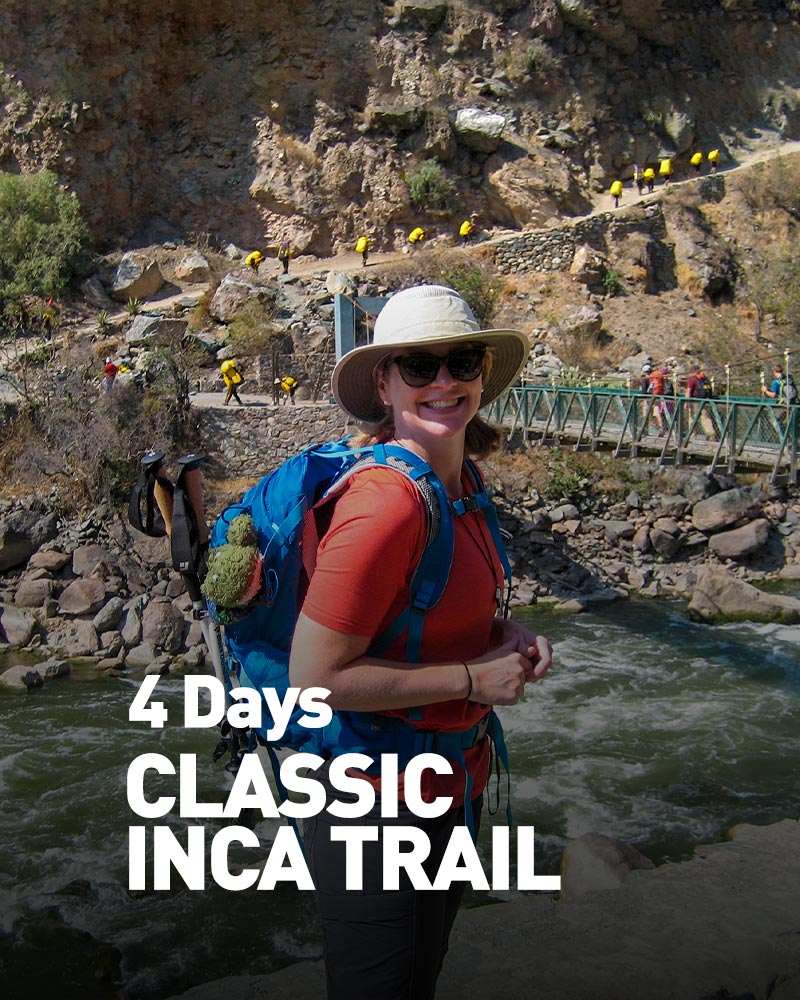 | 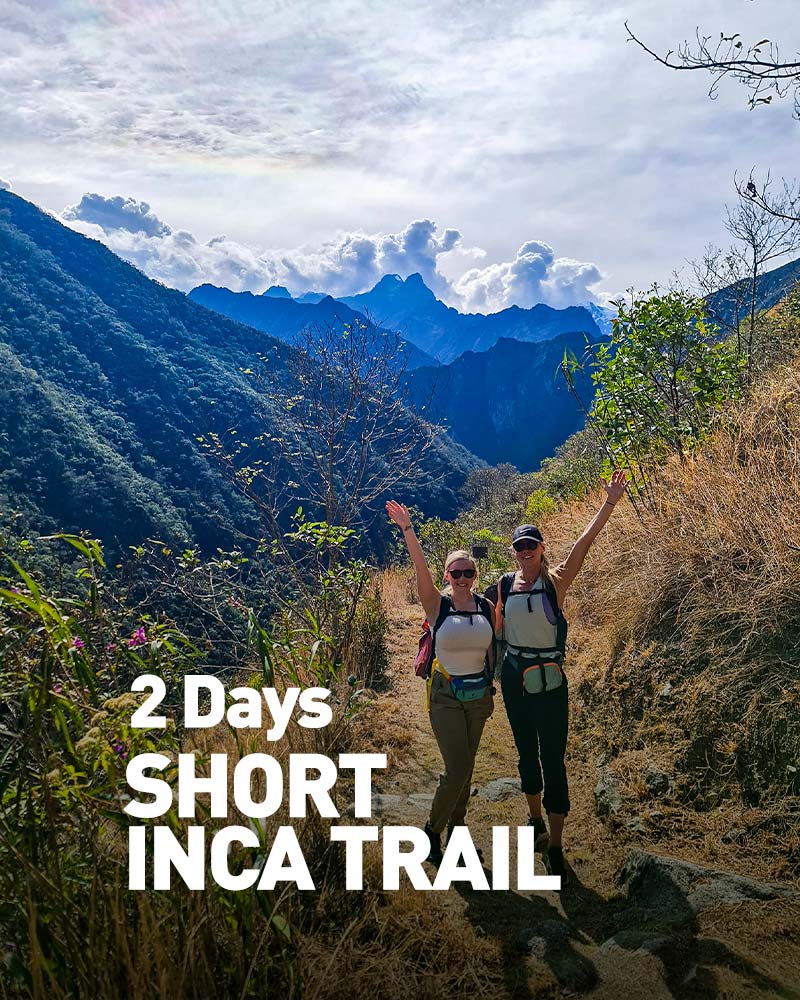 |